With Free Ride USA pulling into the station at your FLGS, I wanted to remind you of the original version, Friedemann Friese’s 2021 Free Ride. Both games are about scoring the most points by creating railway connections between cities. Where 2024’s Free Ride USA creates connections from sea to shining sea, Europe is the setting for the original, with routes from Edinburgh to Moscow and St. Petersburg to Athens.
Free Ride builds on the train connection foundation laid by Alan R. Moon’s classic Ticket to Ride with some noticeable improvements. For me, Free Ride has replaced Ticket to Ride as my go-to, light-to-medium weight train game. Let’s get our tickets and discover why.
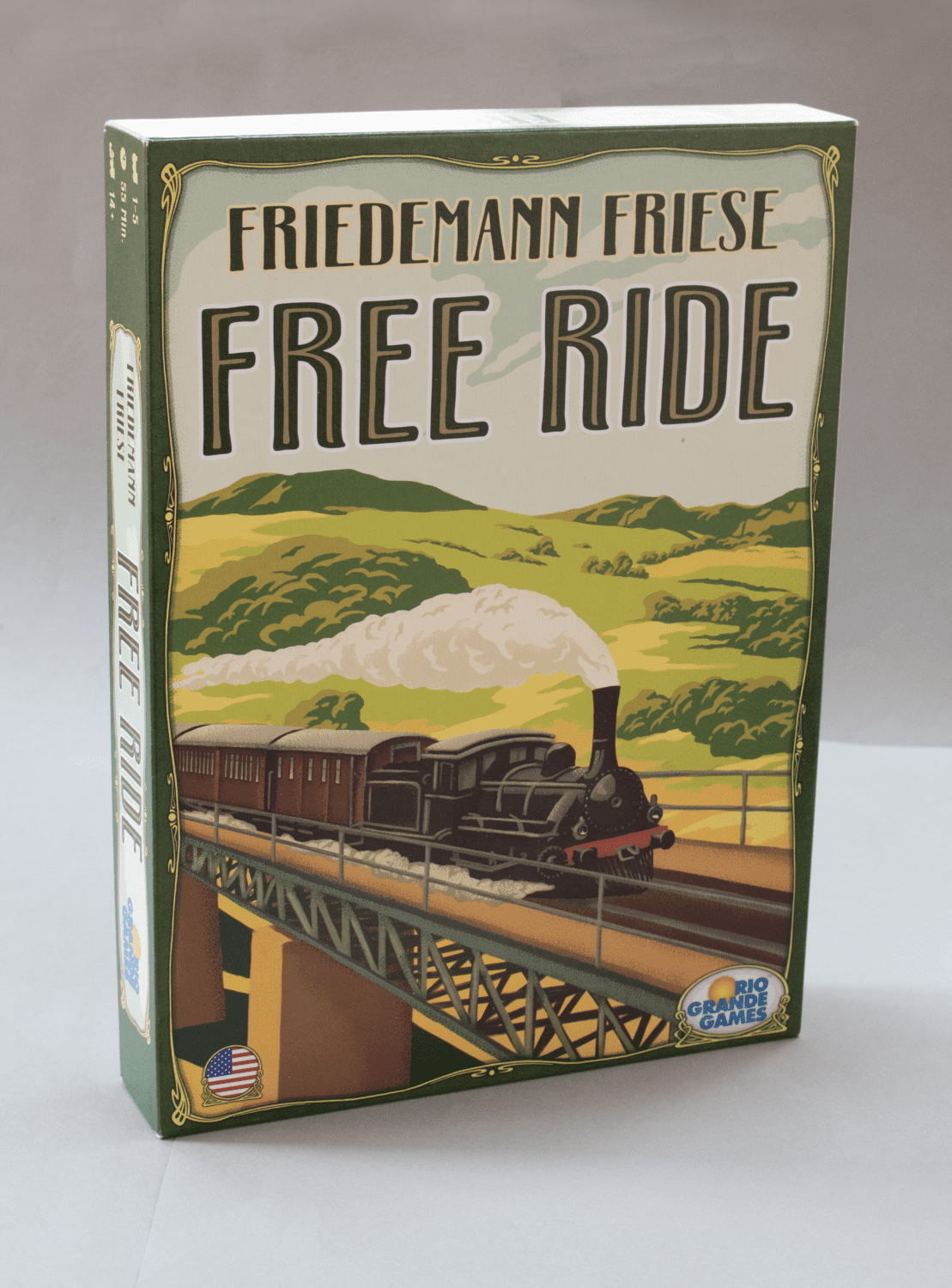
All Aboard!
To play Free Ride, have players choose a color and give them the train, hammer, arches, and cardboard train cards in that color, reserving the train card marked II for later use. Players will also receive a number of black train tracks, depending on player count.
Place the game board on the table. Then put two coins on each border city with a coin icon. Give each player six coins.
Shuffle the three decks of cards separately, keeping the I deck nearby. Set the II and III decks to the side for now.
Determine the player order for all players, then lay out three sets of three tickets from the I deck.
The first player will choose which two cities to connect based on the three tickets in each column. That choice must always be the top two city cards, or the second and third cards. (Never the first and third cards)
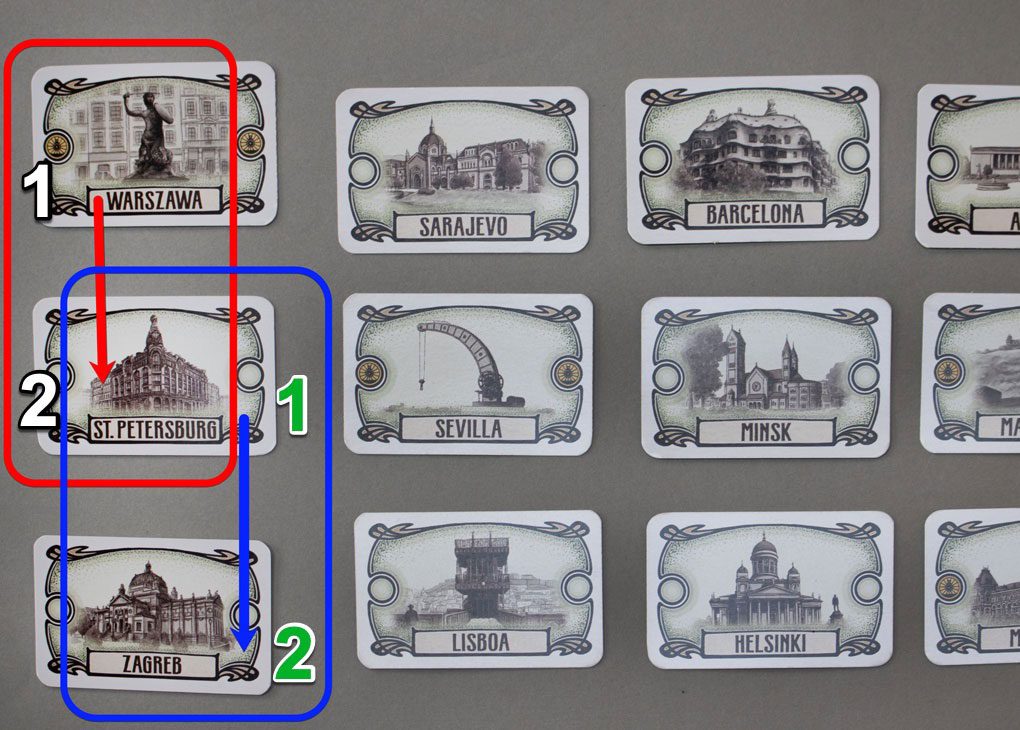
In Free Ride, you’ll score 5 points for each unique city at either end of the connection for those chosen routes. If you revisit a city, you’ll only score 2 points the first time you do so. Visit that city a third time or more and you won’t score that ticket at all. You’ll also score 3 points for each coin you have at the end of the game.
Have Your Tickets Ready
On a turn, you can take one of these three actions:
- Lay Track – If lay down track, you have two construction points per turn to do so. A standard open space takes one point; a ferry or tunnel takes two points. You’ll place one of your arches over the track to show you own it.
- Move Your Train – At the start of the game, your train can only move through two cities per turn. You’ll have to move from your starting city to the destination city to score that set of cards. To claim a new set of cards, you’ll have to move your train to the new starting city.
- Gain More Track – You’ll run out of your starting tracks quickly. To get more, you can take five tracks as your lone action for a turn.

Gathering Steam
When moving your train from city to city on the rail lines you own, it’s a free ride. However, there will be times when it’s either faster or you’ll be required to use the railway connections built by other players. To do so, you’ll need to pay that player a coin for each city-to-city connection you travel through. After doing so, those tracks become free for all players to use.
The player who starts, ends, or passes through a border city with coins next to the city’s name gets to claim those coins. Remember: each coin is worth three points at the end of the game.
Deck I consists of 45 route cards, one for each city on the board with no duplicates. After that deck runs out, move on to the Deck II cards. Both Deck II and Deck III are duplicates of Deck I, so you’ll need to keep an eye on not repeating connections to the same city. (Remember, you’ll only score a city the first two times you connect to it.)
As well, when you lay out the first of the Deck II cards, you get another player train card that allows you to take on a second route. You still need to be in one of the starting cities to claim the route from those available. An important part of the mid-game strategy is to choose two routes that work well together. This will increase your completed routes and, therefore, your score.
When you place the first set of cards from Deck III, your train can move along tracks through three cities instead of the standard two.
Now Arriving at Platform Nine
After you add the last three cards from Deck III to the routes to be claimed, any player can trigger the end of the game. To do so, on your turn, simply remove your train from the board. Other players can continue to take turns, but each time it would have been your turn, you gain a coin. This can create an interesting tension for the remaining players: can they earn over 3 points on their subsequent turns? Or should they withdraw from the game as well?
End game scoring, as I mentioned, is straightforward: Separate your city tickets into piles, one for each city. The first time you connect to a city, it’s worth 5 points. The second time you connect to the same city, it’s worth 2 points. If you complete more than 2 connections to a city, the additional connections do not score. Coins are worth 3 points apiece.
So, How Was Your Trip?
On the surface, Free Ride is a train game. You’re laying tracks from city to city to city, then moving your train from its starting city to the terminus of your chosen route, just like a train game should be.
However, as you play it, you realize it’s really a game about efficiency: how quickly you can complete a new route—and whether it makes more sense to lay your own track or pay for someone else’s tracks.
Your opening game will be all about building your own tracks between your starting cities. Your next connections will likely be cities close to the final city of your last route. However, as you progress into Deck II and Deck III, the central part of the board becomes congested with tracks belonging to all players.
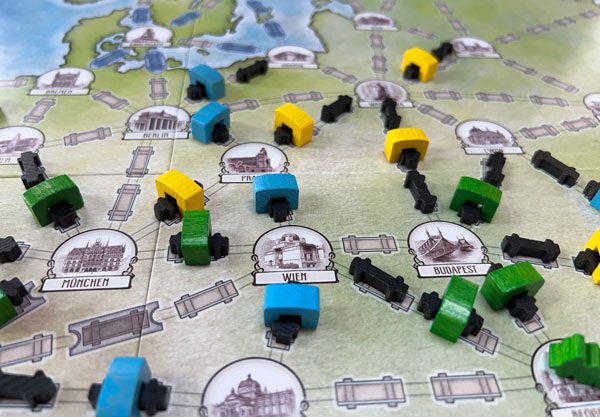
Even if you planned well and built tracks that cut through all that railway traffic, you can only reach the cities along the extremities through very limited connections. Sure, you could spend turns building your own track between surrounding cities, but is that the best use of your limited resources?
Your primary resource here isn’t train track, or route cards, it’s time. In a recent game, I went around another player’s connected cities, laying down track between three other cities, to avoid paying him 2 coins to travel on two of his connected city rail lines. Looking back on it, those 2 coins (6 points) came at the cost of three additional turns. Was that extra time worth those 6 points? In my case, there was also a pair of cities on offer for a nearby city—another city I had not been to—meaning 15 points, or 11 after giving up two coins to get to the cities more quickly.
Free Ride is full of these questions. In life, we occasionally ask if something is worth our time; in Free Ride, that question comes along for the ride on most turns after Deck I runs out, challenging each choice you make.
Free Ride is a welcome addition to my game collection. It was easy to teach to my weekly group–gamers who have played Ticket to Ride for years—and our games have always been close. Despite having a large, congested table presence, it’s a quick-paced game where players seldom fall victim to Analysis Paralysis. If someone saw it on my game shelves and suggested we play, I’d be clearing off a table before they finished asking.
A Final Caboose of Thoughts
I have played both the original, European Free Ride and Free Ride USA. While there are some very minor differences between the two games, this is the only time in any of my reviews where my preference stems from my Americentrist public school education. Perhaps you’ve heard the stereotype that Americans grow up only learning about their own history, their own geography, and their own language. Sadly, in my case, this was true. Despite my two Masters degrees and my love for British television, my knowledge of where European cities are in relation to one another is sadly lacking.
When I played Free Ride USA, knowing where the connecting cities were was not an issue. For the European version, it definitely was a problem. This was, in part, due to my aforementioned Americentrist school education, and in part because the cities are spelled in the local-to-that-city language and alphabet, making them even more difficult to identify.
In his video review of Free Ride, BoardGameGeek blogger W. Eric Martin recommended using markers to indicate the three cities on offer—that’s three times six, or 18 markers, plus the 1-2 routes you’ve already claimed. For my three player games, this meant making 24 sets of three markers.
This definitely helped my group play the game, even though the board was a visual mess challenge.
For this reason, if you’re in the US, I recommend Free Ride USA. If you’re in Europe, the original Free Ride is a good bet.
_________ * * * _________
My thanks to Meeple Mountain founder and Editor-in-Chief, Andy Matthews, for passing his copy of Free Ride on to me for this review.





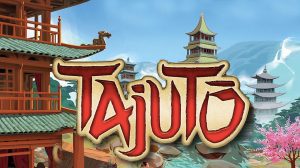

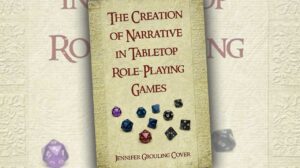


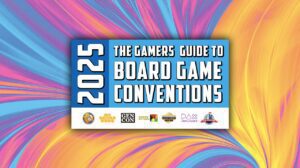
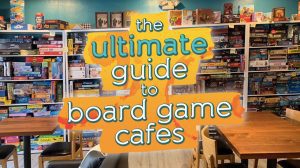
Add Comment